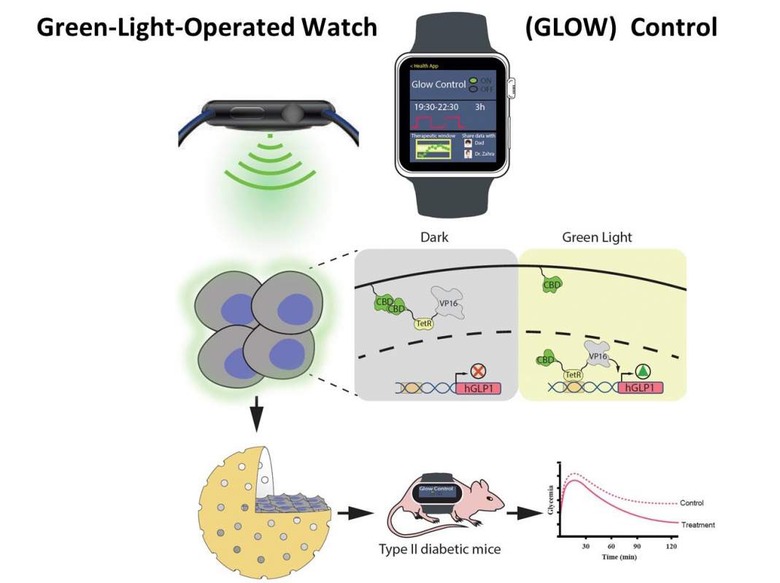Smartwatch-Activated Gene Switch Could Help Treat Diabetes
Researchers from ETH Zürich have developed a gene switch that is operated using the green LED light emitted by commercial smartwatches. Typically, that green LED light is used for the pulse rate detection feature. However, the new approach created by the researchers could be used to treat diabetes in the future.
Smartwatches are extremely popular, and with their wide deployment, researchers want to capitalize on the popularity by using LEDs to control genes and change the behavior of the cells through the skin. Team lead Martin Fussenegger says that no naturally occurring molecular system inside the human cells responds to green light, so the team had to build something new.
The team built a molecular switch that, once implemented, can be activated by the green light of the smartwatch. The switch they created is linked to a gene network that the researchers introduced in the human cells. The team used the HEK 293 cells for the prototype, something described as customary. That particular cell is able to produce insulin or other substances as soon as the cells are exposed to green light, depending on their configuration. Turning off the green light deactivates the switch and stops the process.

Researchers used standard smartwatch software without the need to develop dedicated programs for their system. During the test, researchers turned the green light on by starting the running app. They say that an off-the-shelf watch offers a universal solution to flip the molecular switch.
The molecular switch itself is more complicated with a molecule complex integrated into the membrane of the cells is linked to a connecting piece, sort of like a railway carriage. When the green light is emitted, the component that projects into the cell is detached and transported to the cell nucleus is where it triggers an insulin-producing gene. When the green light is turned off, the detached piece reconnects with its counterpart embedded in the membrane. Researchers say it's unlikely the technology will enter clinical practice for at least another decade. Part of that delay is the need for the system to go through clinical trials, but it represents a potential breakthrough in the treatment of diabetes.
